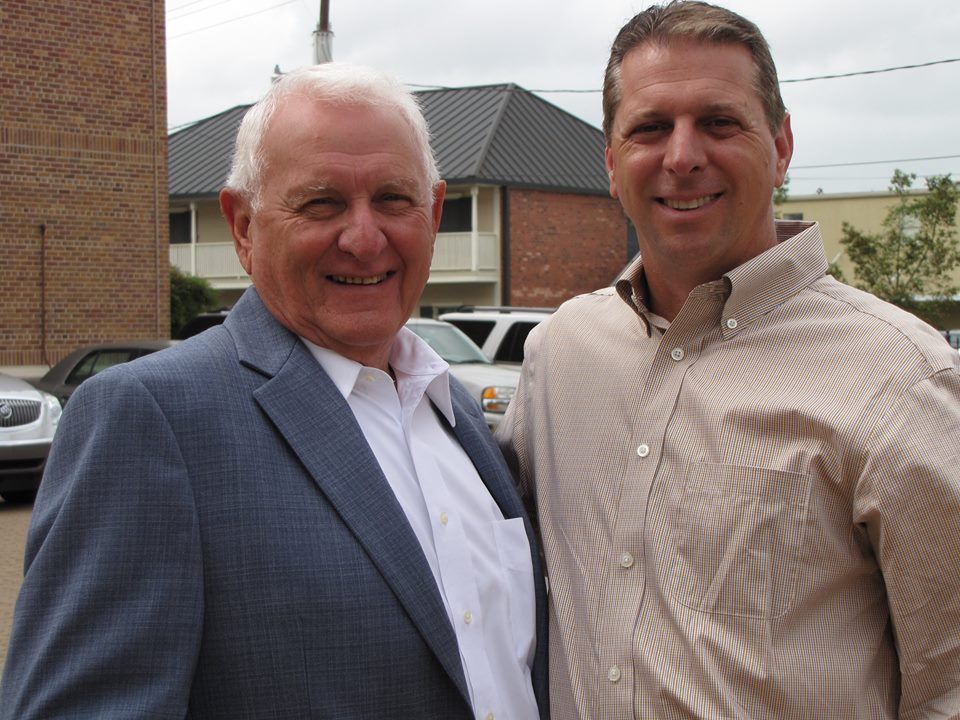Russell Guidry
January 1, 2008Kiger, Barrios to reign at Babylon VII
January 4, 2008What better way to ring in the New Year than to have your muscles kneaded and manipulated to the point of pure relaxation from a professional massage therapist?
Donna Wilson is here to provide that relief. She said therapeutic massage is a perfect solution for rubbing away stress, sore muscles and joint pains.
“I provide care to those who need general relaxation and those who need pain relief from things like car accidents or sporting injuries,” she said. “These people have sought physical therapy but nothing is working. They are in chronic pain and need some relief.”
The former home health nurse opened her massage therapy clinic in Thibodaux this past year after working with several chiropractors in the area. Wilson is nationally licensed to perform therapeutic relief. Every year, Wilson said she continues her education to better serve clients.
“When I first started out, I didn’t quite know what the depths of massage therapy were,” she said. “I was pleased to find that it was very medical-related and that you do help people. It is a true form of therapy.”
Wilson said the biggest misconceptions about massage relate to the differences between spa and therapeutic massages. “Most of the time at a spa, people are in a quiet, dimly-lit room and they are there for general relaxation,” she explained. “But when you come to my clinic, you are not in a dark room because I have to see what’s going on with your body. I am not going to be quiet the whole time because I want you to be able to tell me where it hurts.”
Wilson tries to provide a calming environment for her clients with soothing music.
On the first visit, an assessment of the client’s symptoms, medical history and other factors such as work and stress level is compiled, she said. The massage treatment usually lasts 30 to 60 minutes or sometimes longer depending on the extent of the symptoms. For some, Wilson suggests a series of appointments.
“Each session is different. It’s all geared to what that person needs at the time,” she said.
Wilson targets muscles, tendons, ligaments, skin, joints and connective tissues.
She said a massage is applied with the hands, fingers, elbows, forearms and feet. There are more than 80 different massage modalities, according to Wilson.
The word “massage” comes from the Latin word meaning “the friction of kneading.” In Latin, “friction” also means “treatment.” Most massages involve kneading the patient’s body with pressure, tension, motion or vibration. It is generally done manually or with mechanical aids.
Massage therapy can be performed by a professional massage therapist or by other health care professionals, such as chiropractors, osteopaths, athletic trainers and physical therapists.
Most massage therapist work in hospitals as allied health professionals, in nursing homes, sporting and fitness facilities or spas, Wilson explained.
In most professional settings, massage therapy is administered while the client is lying on a massage table, sitting upright in a massage chair or lying on a pad on the floor.
“Chair massages are mostly for the business community, where we go to the office and give a general massage to the workers,” she said. “Most of the time it’s a worker’s incentive.”
Wilson uses a heavily padded table and a horseshoe-shaped head support that allows the patient to breathe easily while lying face down. The table can be stationary or portable. Topical oils like coconut oil, grape seed oil, macadamia oil, sesame oil, pecan oil or mustard oil are massaged on the skin, and are used as a relaxing agent. Olive oil or almond oil can be used as a base for the skin prior to the massage.
Massage therapy dates back thousands of years. It was popularized in the early 1800s by two New York physicians who learned a massaging technique from Swedish doctors.
The most common massage therapies used in the United States are:
• Swedish massages. The therapist uses long strokes, kneading and friction on the muscles and moves the joints to aid flexibility.
• Trigger point massages (also called pressure point massage). Using a variety of strokes, the therapist applies deeper, more focused pressure on knots in the muscles or joints.
• Deep tissue massage. The therapist uses a pattern of strokes and deeper finger pressure on the parts of the body where muscles are tight. The massage focuses on the layers of muscle deeper under the skin.
• Shiatsu massage. The therapist applies varying, rhythmic pressure from the fingers on parts of the body that are believed to be important for the flow of energy.
• Chair massages (also known as corporate massage). Using an upright chair for simple muscle kneading and manipulation, a chair massage typically lasts 10 to 25 minutes and can be done anywhere.
• Stone massage. The therapist rubs smooth hot or cold stones over the back, along the spine and on top of the torso.
Every morning licensed massage therapist Donna Wilson starts her day off by repositioning her massage table and warming the room for clients. * Photo by SOPHIA RUFFIN








